Standing back to admire a 6-foot-long swath of linen stretched across a custom-made wooden frame, Elizabeth Creeden confers with a group of embroidery stitchers about how to deal with Henry the VIII. They’ve already worked tirelessly on the irrepressible monarch’s gold-threaded finery, replete with sparkling beads, puffed sleeves, and an actual feather in his hat. As a result, Henry’s historical predecessor at the center of the panel has faded unceremoniously into the background. But Creeden and her crew will not let any imperfections or inaccuracies muddle the progress of The Plymouth Tapestry, a series of 20 embroidered panels that chronicle the history of Plymouth Colony, from its native tribes through the arrival of the Pilgrims.
“This panel was just about complete, until we noticed how Henry VIII is stealing the spotlight,” says Creeden, who formerly owned The Sampler needlework shop in Plymouth. “We will fix it.”
By the end of February, the group had already finished the initial four tapestry panels, the first two of which have been on display at Pilgrim Hall Museum in downtown Plymouth.
In early March, five more panels are in progress, filling up two downstairs rooms at Creeden’s antique Plymouth home. About half of the 20 regular stitchers gather on a Tuesday afternoon, bent over their individual tasks at hand, guiding delicate needles and thread through the linen according to an outline imprinted on the fabric canvas. For over a year, the group has me every Tuesday, Friday and Sunday to work on the tapestry project.
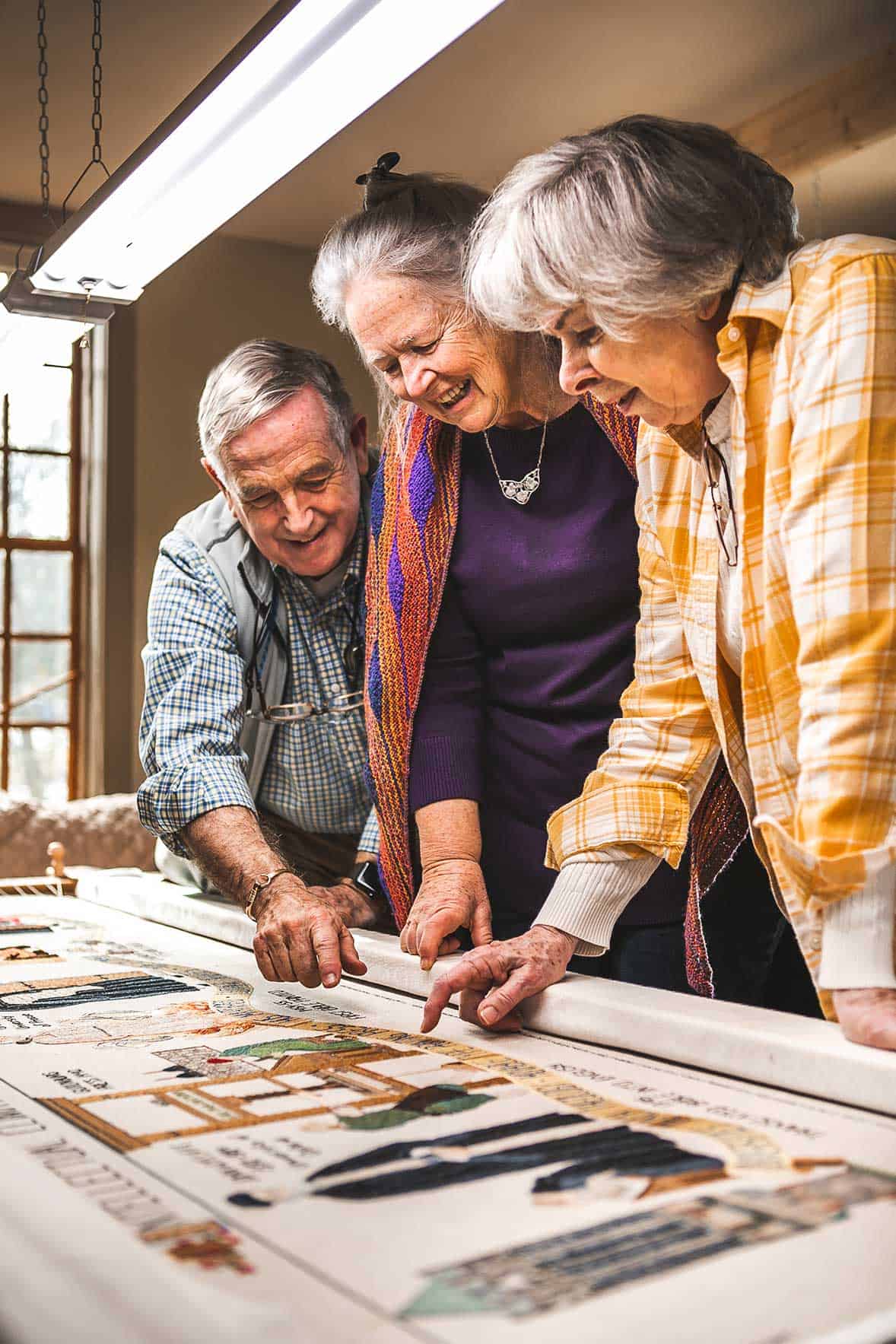
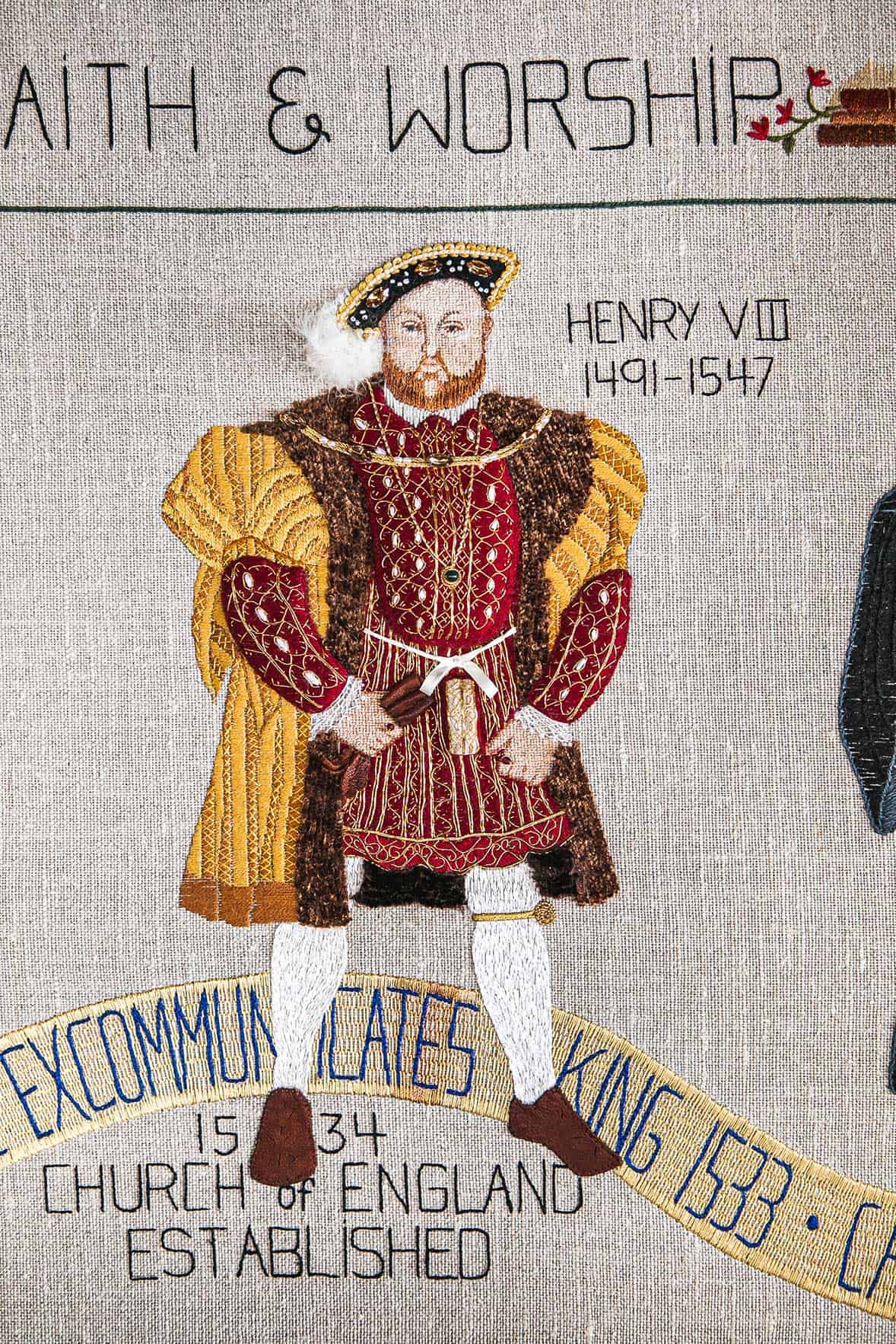
One of the regulars, Deb Partain, has embroidered for most of her adult life. For The Plymouth Tapestry, she focused on the lettering of the narrative and on teaching intricate stitches to beginners and seasoned crafters alike. At the bottom of each panel is a list of the names of all of the people who helped create the scenes above. On the second panel, for example, 16 stitchers have contributed their time and talents.
“One thing that people will never know and never understand is all the work that goes on behind the scenes before we even begin stitching,” says Partain, pointing to Creeden, who conducted extensive research and drafted the large-scale sketches that were later printed onto the linen.
Upstairs, Creeden pores over a few of her drawings that are in progress. She focuses on how to depict the particulars of the uniforms worn by soldiers of varying ranks, their armor and weaponry, the type of goods they’d secure, and how they’d pack for a journey. She’s taking meticulous care in reproducing the face of Squanto, the member of the Patuxet tribe who helped promote a peaceful transition when the Pilgrims arrived in Plymouth.
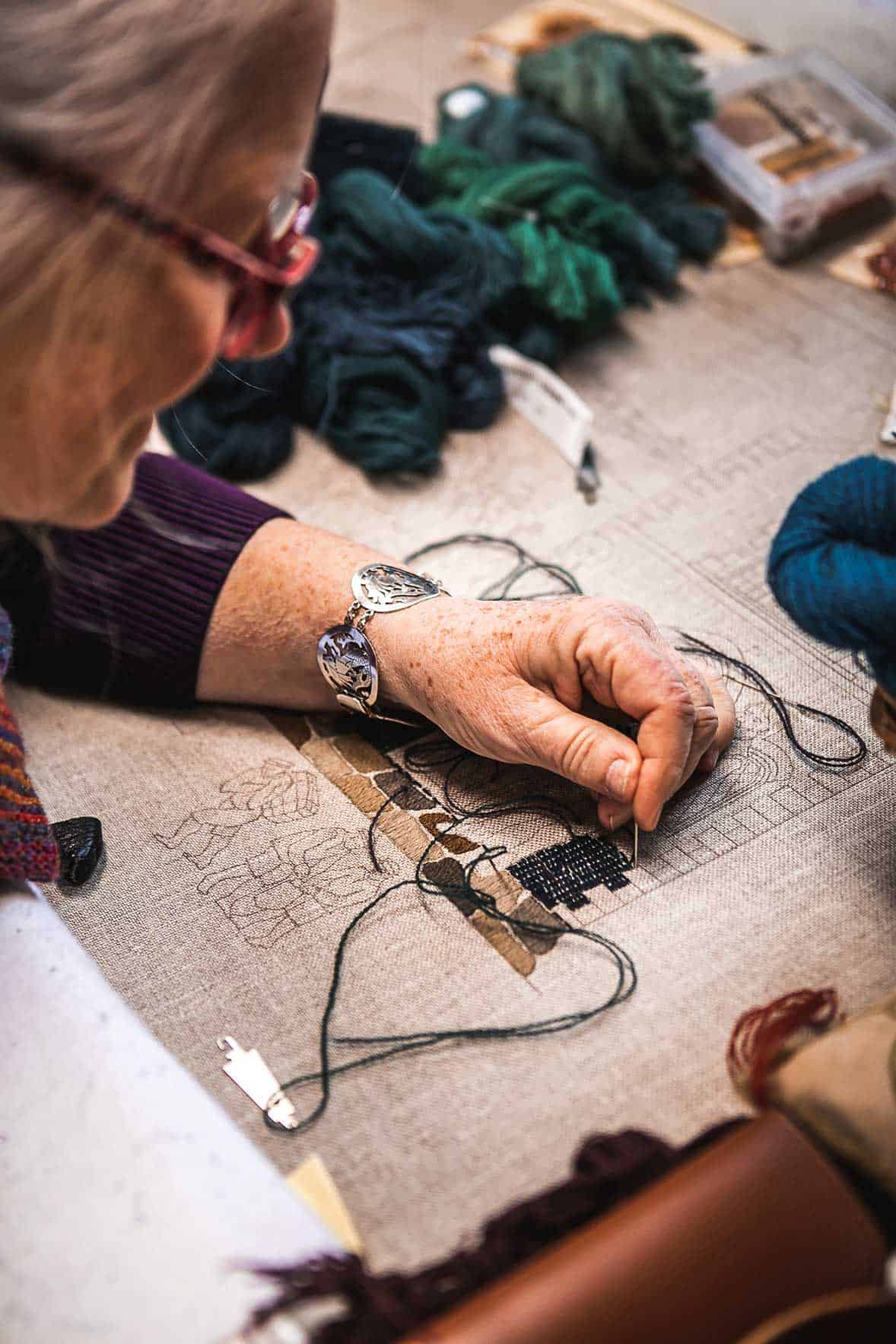
“I have to have him looking the same in four different panels,” she explains. “I think I’ve finally got his face just right.”
Creeden’s sketches are ultimately scanned onto a flash drive and delivered to David Berman, proprietor of Trustworth Studios in Plymouth, who imprints each panel’s design onto linen via a process similar to printing wallpaper. Once the stitching begins, it takes a team of volunteers approximately 1,000 hours of needlework to complete each 6-foot-long panel.
Donna Curtin, executive director of Pilgrim Hall Museum, describes The Plymouth Tapestry as a touchstone of the Plymouth 400 commemoration—one that the museum is proud to display. “The work that the stitchers have done is truly amazing. The tapestry is a beautiful tribute that we hope will last for generations to come.”
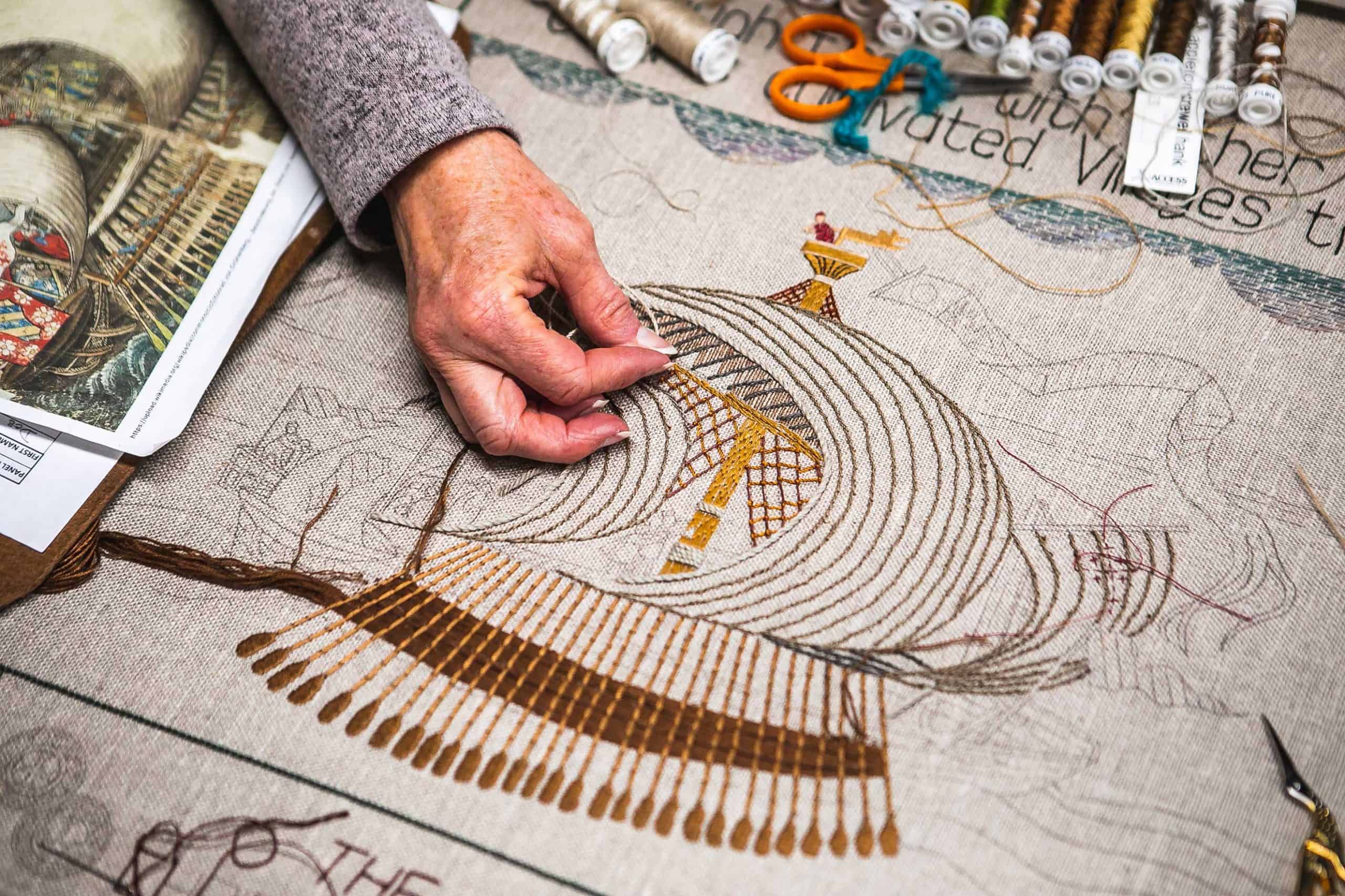
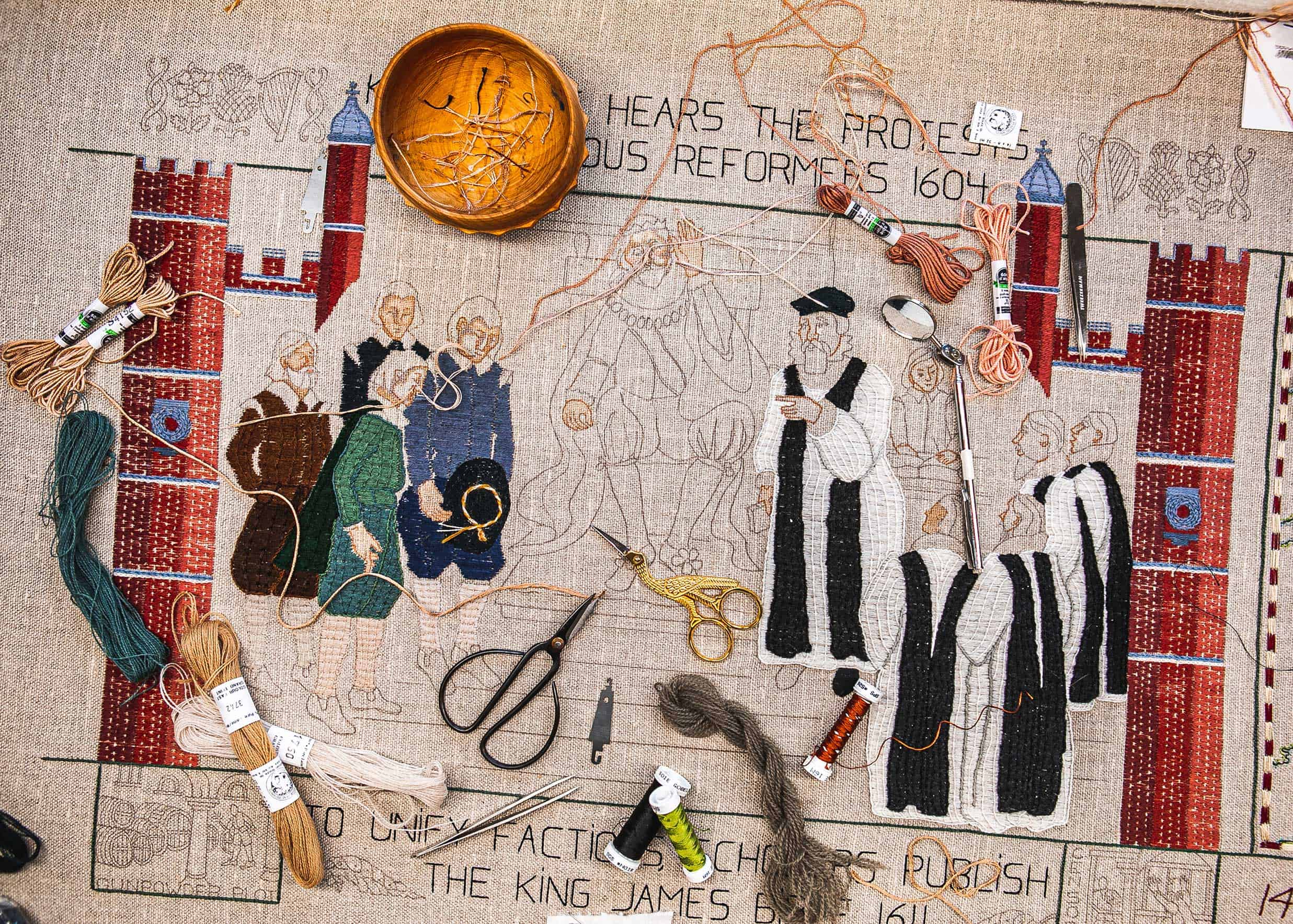
Even when viewed separately, the panels are almost too much for a single pair of eyes to take in all at once. Every element has been painstakingly stitched into its rightful place, with supporting details that breathe life into each scene: a mouse perched atop the Gutenberg printing press in 1440, whales and orca swimming off Moshup beach, a miniature sterling silver boatswain’s whistle that hangs around a sailor’s neck. The countless colors of thread that shade the buildings and landscapes are selected “by committee,” notes Julie Doyle, who took up embroidery about a year ago to participate in the project.
“It’s very satisfying,” Doyle adds. “There’s a zen-like quality to the stitching. Everything else falls away and you’re left with a distinct focus and, afterward, a sense of accomplishment.”
A special wall is being constructed at Pilgrim Hall Museum to display the tapestry in its assembled entirety. When all 20 chapters of the story are finally pieced together, which is expected to take place around Thanksgiving of 2021, the magnitude of the Plymouth Tapestry will be a wonder to behold.
For additional information, visit pilgrimhall.org.
